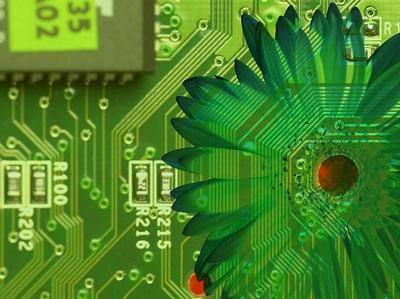The latest Green500 Listshows two continuing trends despite seven of the world’s Top 10 greenest supercomputers changing up from the previous June 2011 rankings: Many supercomputers are aggregating many low-power processors such as the IBM BlueGene/Q, while others are using more energy-efficient accelerators, typically from the gaming/graphics market.
As in the June 2011 list, an IBM Blue Gene/Q supercomputer tops this edition at 2026 MFLOPS/W, or ‘millions of floating-point operations per second’ (MFLOPS) divided by ‘watts’ (W). IBM Blue Gene/Q did so well that its occupies the list’s top five positions at various locations throughout the world, said Green500 co-founder Wu Feng, an associate professor with the Virginia Tech College of Engineering’s computer science and electrical and computer engineering departments.
The fastest supercomputer in the world is the K supercomputer from RIKEN in Japan, according to the well-known industry standard Top500 List. Yet, while the K supercomputer, which also aggregates many low-power processors, increased its energy efficiency to 830 MFLOPS/W from 825 MFLOPS/W, its Green500 rank dropped to No. 32 in November from No. 6 in the June release.
“That significant drop was mainly caused by the addition of new graphics processing units-accelerated systems to the latest list,” Feng said. “Specifically, supercomputers that are accelerated by graphics processing units (commonly known as GPUs) occupy ranks six through 31.” He added that the number of GPU-accelerated supercomputers doubled from the June 2011 list.
The greenest accelerator-based supercomputer in the world remains the DEGIMA cluster, a self-built supercomputer from Nagasaki University in Japan. The DEGIMA cluster is accelerated by AMD/ATI Radeon graphics processing units on a thrifty supercomputing budget on the order of $500,000, Feng said.
Fourteen other accelerator-based machines round out the 20 greenest supercomputers in the world, all with GPU accelerators from NVIDIA Corp., including institutions ranging from academia such as Tokyo Institute of Technology; from centers and government labs such as Barcelona Supercomputing Center and Sandia National Laboratories; and anonymous industry submitters.
One notable addition to the latest list comes under a name popular with Christmas shoppers, almost apt timing for the latest list’s release: Amazon – the online shopping behemoth. Its EC2 system ranks at No. 41 after the company entered into the business of selling computing resources, and ranks at No. 5 in the list, with respect to systems that contain only commodity central processing units (commonly known as CPUs) from Advanced Micro Devices Inc. or Intel Corp.
The Green500 has ranked the energy efficiency of the world’s 500 fastest supercomputers since its debut in 2007, serving as a complement to the TOP500. “It seeks to raise awareness in the energy efficiency of supercomputing, and in turn, drive energy efficiency as a first-order design constraint – one that is on par with speed as a metric for performance,” Feng said.
During the past six months, Feng and his research team who compile the Green500, found that more efficient systems are entering the list, thus improving the average efficiency of measured systems to 337 MFLOPS/W from 261 MFLOPS/W, an uptick of 29 percent. The improvement in efficiency of accelerator-based systems also continued its upward trend to 788 MFLOPS/W from 707 MFLOPS/W.
The Green500 List is released twice a year, in June and in November, at Virginia Tech.
The College of Engineering at Virginia Tech is internationally recognized for its excellence in 14 engineering disciplines and computer science. The college’s 6,000 undergraduates benefit from an innovative curriculum that provides a “hands-on, minds-on” approach to engineering education, complementing classroom instruction with two unique design-and-build facilities and a strong Cooperative Education Program. With more than 50 research centers and numerous laboratories, the college offers its 2,000 graduate students opportunities in advanced fields of study such as biomedical engineering, state-of-the-art microelectronics, and nanotechnology. Virginia Tech, the most comprehensive university in Virginia, is dedicated to quality, innovation, and results to the commonwealth, the nation, and the world.


